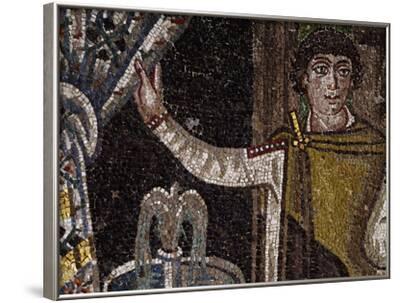

One of the earliest images showing a Verger looking very much as he does today depicts that of Saint Paul’s Cathedral, London, in 1616, five years before John Donne became its Dean (it is very probable the man pictured conducted Donne to the pulpit to deliver his famous sermons). Both of these - like almost all garments worn by clergy in the middle ages and renaissance - are nothing more than late medieval/early modern academic dress: as all academics were clerics (and many clerics academics), such garments were worn by Catholics and Protestants alike. The Verger’s distinctive dress is a gown , although today many wear the less bulky chimere - a garment proper to a Bishop in the Anglican communion. The modern English form might possibly come directly fromvergifer (several centuries of lazy pronunciation having removed the awkward “f”) but more likely it derives from the Norman French Vergerar or - Verger. In Latin such a one was a Virgarius (rod-man) or “virgifer”(made by adding “–fer” - from the verb “fero” to carry - to what was carried, following the pattern of Crucifer or Thurifer). That establishment’s distinctive practice, the Sarum Use (or Use of Salisbury) - England’s dominant “dialect” of the Roman Rite and the foundation on which Cranmer built his Prayer Book - contains some references to them of particular interest: procedat minister virgam manu gestans, locum faciens processioni (A Minister goes in front, bearing a rod in his hand, making room for the procession) and Imprimis Sacristes, virgas in manibus gestantes, deinde… (At the beginning: Sacristans bearing rods in their hands then…) so some of these clerics - in addition to their curatorial functions - had become part of public liturgies and begun to carry the wands which would eventually become their badge of office and give them their name: the virge. The next millennium saw liturgies becoming ever more complex with a corresponding increase in the number of clerics required for their preparation and performance as an example, there were 130 such functionaries at Salisbury Cathedral by 1390. Over time the same practical concerns appeared within Christianity and by the fourth century four “minor orders” of clergy had developed to provide assistance to Bishops and Priests one of these - the Ostiarius, or Doorkeeper - is the beginning of the Verger’s history in the Church. Others of them were appointed over the furniture, and over all the holy utensils, also over the fine flour, the wine, the oil, the incense, and the spices ( 1 Chronicles 9:17–29). Some of them had charge of the utensils of service, for they were required to count them when they were brought in and taken out. Peter.A Verger (sometimes “Virger”) is a specialized form of Sacristan therefore a Biblical origin for their office can be found in those members of the Priestly Tribe of Levi set aside by King David and the Prophet Samuel: The gatekeepers were…in charge of the gates of the house of the Lord…as guards…and they had charge of opening it every morning.

Like the other minor orders and the subdiaconate, it is retained in Indult Catholic societies such as the Priestly Fraternity of St. The porter was not a part of Holy Orders administering sacraments but simply a preparatory job on the way to the Major orders: subdiaconate (until its suppression, after the Second Vatican Council by Paul VI), diaconate and the priesthood. Later on, the Porter would also guard, open and close the doors of the Sacristy, Baptistry and elsewhere in the church. The porter had in ancient times the duty of opening and closing the church-door and of guarding the church especially of ensuring no unbaptised persons would enter during the Eucharist.

This was the first order a seminarian was admitted to after receiving the tonsure.

In the Roman Catholic Church, this "porter" became the lowest of the four minor orders prescribed by the Council of Trent. An ostiarius, a Latin word sometimes anglicized as ostiary but often literally translated as porter or doorman, originally was a servant or guard posted at the entrance of a building.


 0 kommentar(er)
0 kommentar(er)
